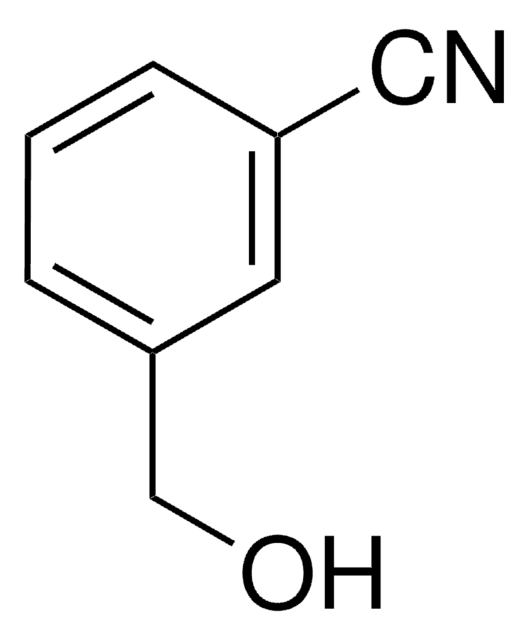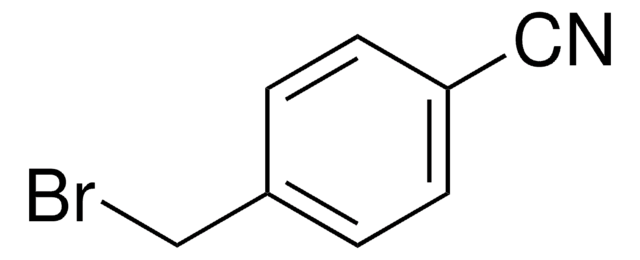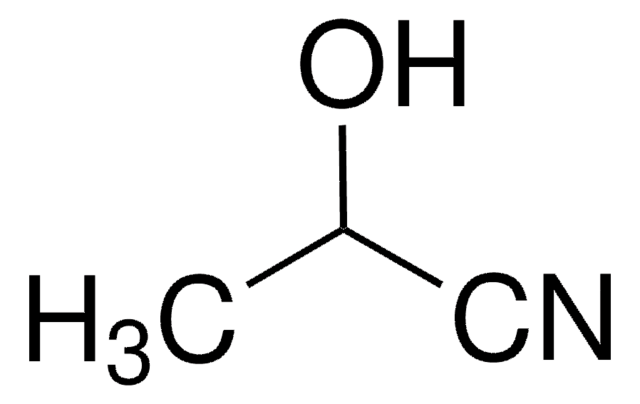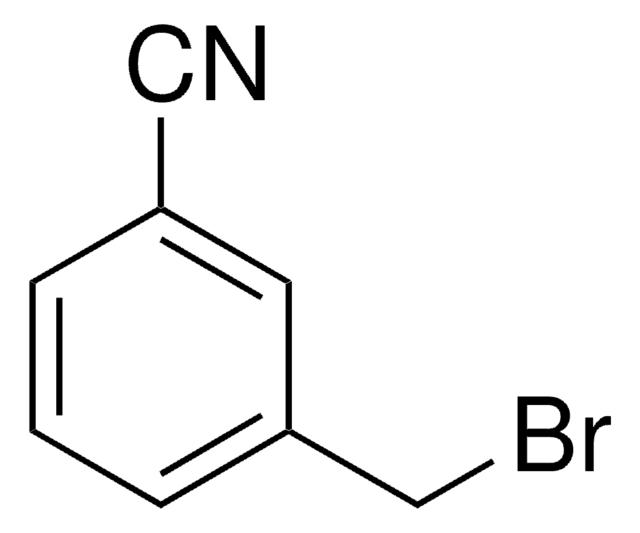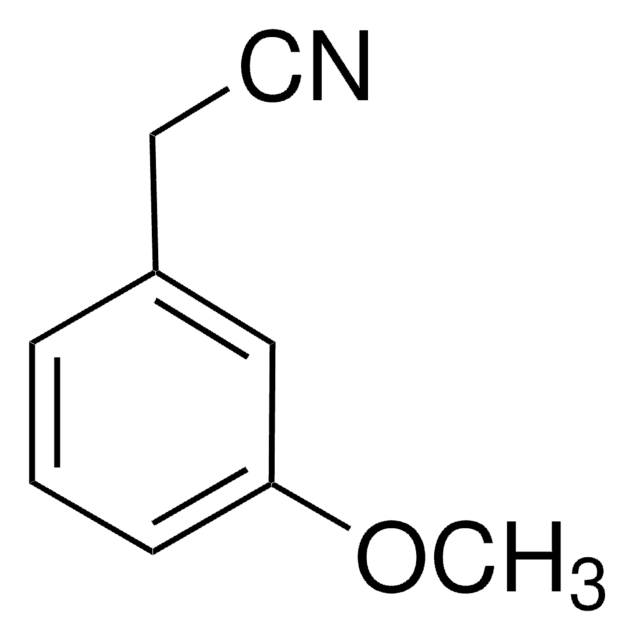M31503
α-Methylbenzyl cyanide
96%
Sinônimo(s):
α-Methylphenylacetonitrile
About This Item
Produtos recomendados
Ensaio
96%
índice de refração
n20/D 1.5106 (lit.)
densidade
0.985 g/mL at 25 °C (lit.)
cadeia de caracteres SMILES
CC(C#N)c1ccccc1
InChI
1S/C9H9N/c1-8(7-10)9-5-3-2-4-6-9/h2-6,8H,1H3
chave InChI
NVAOLENBKNECGF-UHFFFAOYSA-N
Categorias relacionadas
Palavra indicadora
Warning
Frases de perigo
Declarações de precaução
Classificações de perigo
Acute Tox. 4 Dermal - Acute Tox. 4 Inhalation - Acute Tox. 4 Oral - Eye Irrit. 2 - Skin Irrit. 2 - STOT SE 3
Órgãos-alvo
Respiratory system
Código de classe de armazenamento
6.1C - Combustible acute toxic Cat.3 / toxic compounds or compounds which causing chronic effects
Classe de risco de água (WGK)
WGK 3
Ponto de fulgor (°F)
201.2 °F - closed cup
Ponto de fulgor (°C)
94 °C - closed cup
Equipamento de proteção individual
Eyeshields, Faceshields, Gloves, type ABEK (EN14387) respirator filter
Escolha uma das versões mais recentes:
Já possui este produto?
Encontre a documentação dos produtos que você adquiriu recentemente na biblioteca de documentos.
Nossa equipe de cientistas tem experiência em todas as áreas de pesquisa, incluindo Life Sciences, ciência de materiais, síntese química, cromatografia, química analítica e muitas outras.
Entre em contato com a assistência técnica



